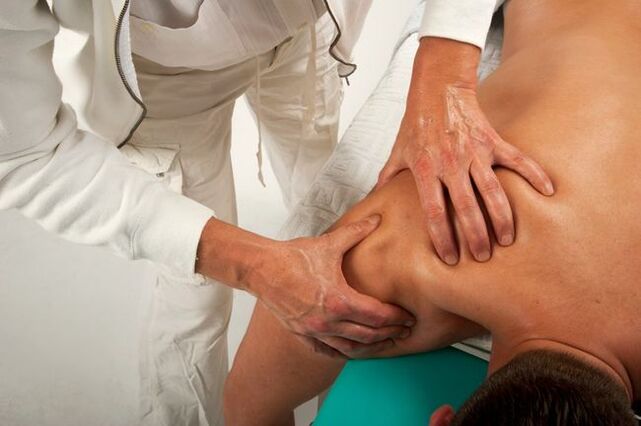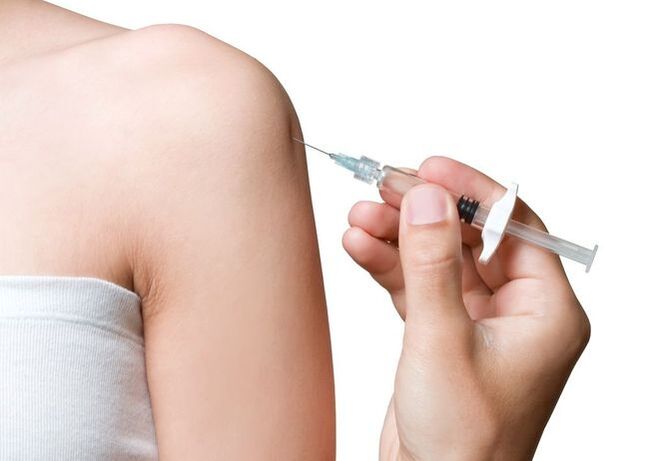What is shoulder joint disease

- Shoulder injuries deform the joint and cause inflammation.
- Insufficient blood supply to the shoulder joint for a long period of time - this condition may be caused by vascular disease.
- Sustained high loads on joints have been observed in construction workers, athletes, and loaders.
- Congenital joint disease.
- Malnutrition, leading to metabolic disorders.
important!The most common form of the disease is post-traumatic arthropathy of the shoulder, ICD-10 code -M19. 91.
Causes and factors of disease
- Injuried. Fractures, bruises, and dislocations can affect the bone and cartilage tissue of the shoulder joint, causing a variety of complications—capsular damage, ligament rupture. Prompt treatment can prevent complications and joint disease.
- Vascular Pathology. Diabetes, atherosclerosis, and varicose veins can influence the development of arthropathy. Additionally, people who abuse cigarettes are at increased risk of developing the disease.
- lack of physical activity. A lack of physical activity, combined with overeating, can lead to weight gain. As a result, metabolism is disrupted, leading to impaired blood circulation in the cartilage and tissues surrounding the joints - the formation of arthropathy.
- Hormonal and immune disorders- Gout, psoriasis, etc.
- joint disease– Synovitis, chronic and acute arthritis, sterile tissue necrosis.
- Endocrine system diseases and metabolic disorders. These conditions can cause the body to be deficient in vitamins and minerals (such as calcium and phosphorus) needed for joint health. This can negatively affect the condition of the joint and complicate its recovery process.
Types and symptoms of shoulder arthritis

- shoulder pain.This is the main symptom of arthropathy - pain of a different nature, which usually worsens with movement and loading of the shoulder joint. The pain can cause discomfort that limits the shoulder's mobility.
- There is a squeaking sound when moving. Salt deposits in the shoulder joint can cause the joint to make a characteristic crunching (or clicking) sound when it moves.
- movement restrictions. Its manifestations depend on the stage of arthrosis - at the beginning of the disease there are no restrictions, during the exacerbation the patient is unable to freely rotate and move the arm.
notes!In its initial stages, primary arthropathy causes no symptoms. This is due to the lack of nerve endings in the cartilage tissue, so the disease begins to manifest itself when the pathological process extends far beyond the joint..
| symptom | The first stage | second stage | The third phase |
|---|---|---|---|
| pain | Occurs rarely - usually in the evening or morning, after exercise, or after hypothermia | Severe pain occurs with any movement | Pain that persists, even at rest |
| movement restrictions | slightly | Reduced range of motion possible | Mobility is severely limited, sometimes completely. Abduction and elevation of the arm become impossible. The hand has to be kept in a forced position which is very painful |
| Shoulder joint creaking | Slight crunching sound when moving suddenly - no pain | You will hear a crunch and a clear crunch with every movement | Any movement produces a constant crunching sound |
| Local manifestations (redness and swelling of joints, increased temperature at the affected area) | does not exist | Occurs during an exacerbation of illness | There is always inflammation in the joints |
| Joint hardening | does not exist | Rarely happens | Sclerosis and deformation of the shoulder |
| Joint changes visible on X-rays | does not exist | Visible signs of joint deformity, joint space narrowing, and osteophytes | Traces of joint damage are clearly visible |
How to Treat Shoulder Arthritis

- Place your hands in a lock between your shoulder blades;
- Tie the belt behind your waist;
- Bend your elbows to shoulder height and comb the hair at the back of your head.
- medical treatement;
- physiotherapy;
- Treated using traditional methods;
- therapeutic gymnastics and acupuncture;
- special diet;
- Spa treatments.
important!An important condition for the treatment of shoulder arthrosis is to ensure rest of the shoulder joint (this is easier to do when arthrosis is observed in the left shoulder joint), and this gentle treatment regimen should be used even after the course of treatment. treat. If the patient continues to bear load from the shoulder girdle, the disease will progress, eventually leading to the need for surgery.
medical treatement
Medicines and pills
- NSAIDs;
- Analgesics and antispasmodics.

ointment
important!Arthritis ointments can help relieve uncomfortable symptoms but do not cure the disease.
physiotherapy
- electrophoresis;
- exposure to magnetic fields;
- Radiation exposure (UV, IR, laser);
- ultrasound.
family therapy
Gymnastics and sports therapy
important!You cannot choose exercises for treating joint disease on your own, no matter what authoritative websites these procedures are described on, and no matter what flattering reviews accompany them. Many of them have contraindications and may cause harm rather than benefit - so you should definitely talk to your doctor before starting to exercise.
- Exercise therapy cannot be performed if you have decompensated lung or cardiac disease, are hyperthermic, or have a medical condition that precludes physical activity.
- Exercise should not cause pain. Otherwise, their selection is incorrect and may lead to complications.
- When treating arthrosis of the shoulder joint, gymnastics require regularity - they need to be performed every day. At the beginning, the training time should not exceed 5 minutes a day, and gradually increase to 20 minutes.
- You need to perform the exercises gradually - first at a quarter intensity and then gradually increase the load. The intensity and amplitude of exercise should be gradually increased. The older you get and the longer you live a sedentary lifestyle, the slower the process of increasing intensity.
- Exercises are performed in an easy, semi-relaxed state - sitting or lying down.
massage
diet

- Limit sweet, starchy, fatty and salty foods.
- Reduce salt intake to a minimum.
- Reduce portion sizes but increase meal frequency (eat small but often).
- Replace animal fat consumption with dairy and vegetable fats.
- Increase the amount of dairy products in your diet, which are a source of calcium, as well as seafood and fish (sources of collagen and phosphorus).
- Include more fresh fruits and vegetables in your diet.
ethnoscience
- Lard and propolis are mixed in equal proportions. Apply the resulting ointment to the shoulder joint area using massaging movements.
- To relieve pain, it is recommended to take an herbal bath with a decoction of chamomile, burdock and nettle.
- A folk remedy for joint disease is oatmeal. Boil them in boiling water and apply the decoction to the shoulders and apply them at night.
prevention
- Eliminates joint underloading associated with sports or professional activities.
- Minimize risk of shoulder joint injury.
- If the shoulder joint is injured or painful, it is important to consult a therapist to minimize the risk of complications.
- Prevent excess weight - control your diet and engage in daily physical activity (gymnastics, walking, swimming).
- In old age, medications that promote the regeneration of cartilage and bone tissue are used.























